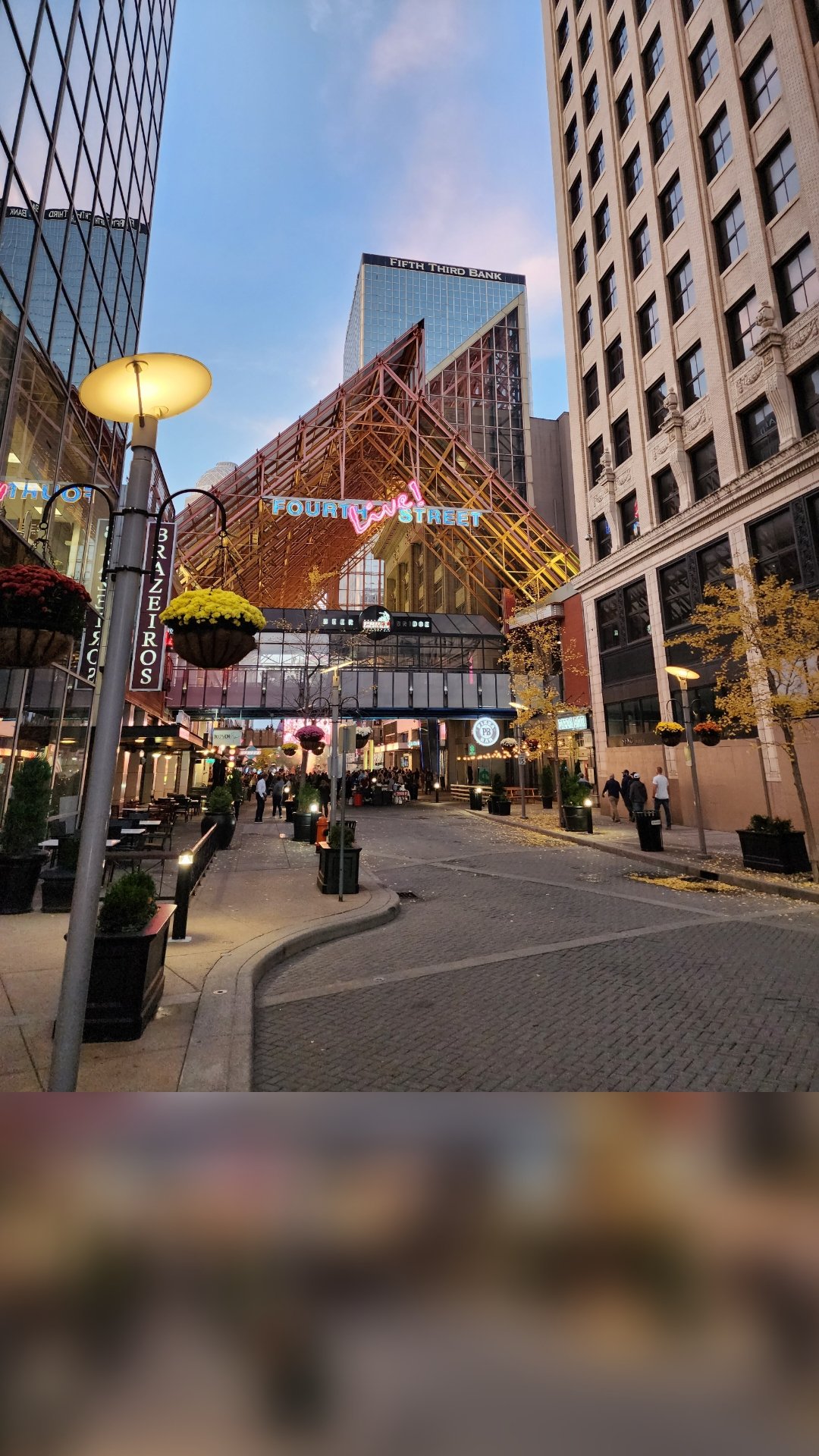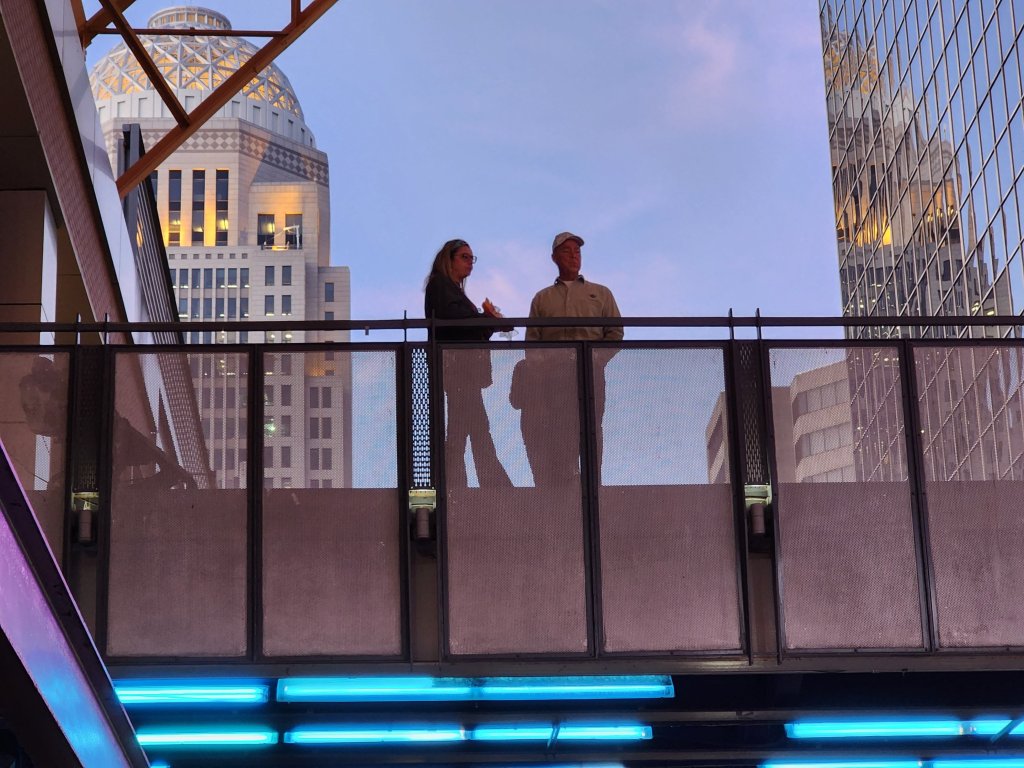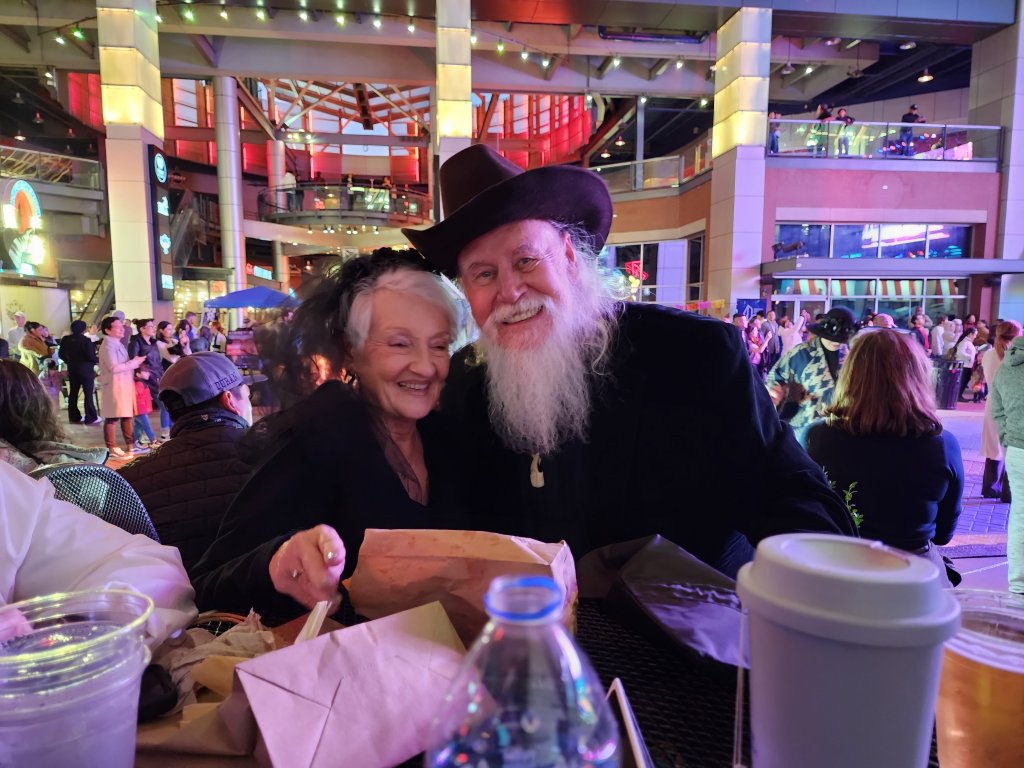
I went to Pamplona to run with the bulls and catch a couple of bullfights. I had never been to a bullfight before and didn’t know what to expect. I had rather a detached and academic approach towards the whole affair but I must admit I was fascinated by what I saw and emotionally moved.
To prepare for my journey I brought with me to read, Death in the Afternoon by Ernest Hemingway. I have prepared some quotes from the book to accompany the pictures I took. No on can quite explain the experience of bullfighting like Ernest Hemingway. He is the master.



There are three acts to every bullfight. They are always the same. The first act is where the bull charges the picadors and the matador distracts the bull with his cape. The picador drives the steel of the pic into the neck muscles of the bull to weaken it.
Act two is the banderillas. They are a pair of sticks about three feet long tipped with a harpoon-like shaped steel point at on the end four centimeters long. They are placed two at a time in the humped muscles at the top of the bulls neck as the bull is charging the matador. They are designed to complete the work of slowing the bull down. Four pair are usually put in.



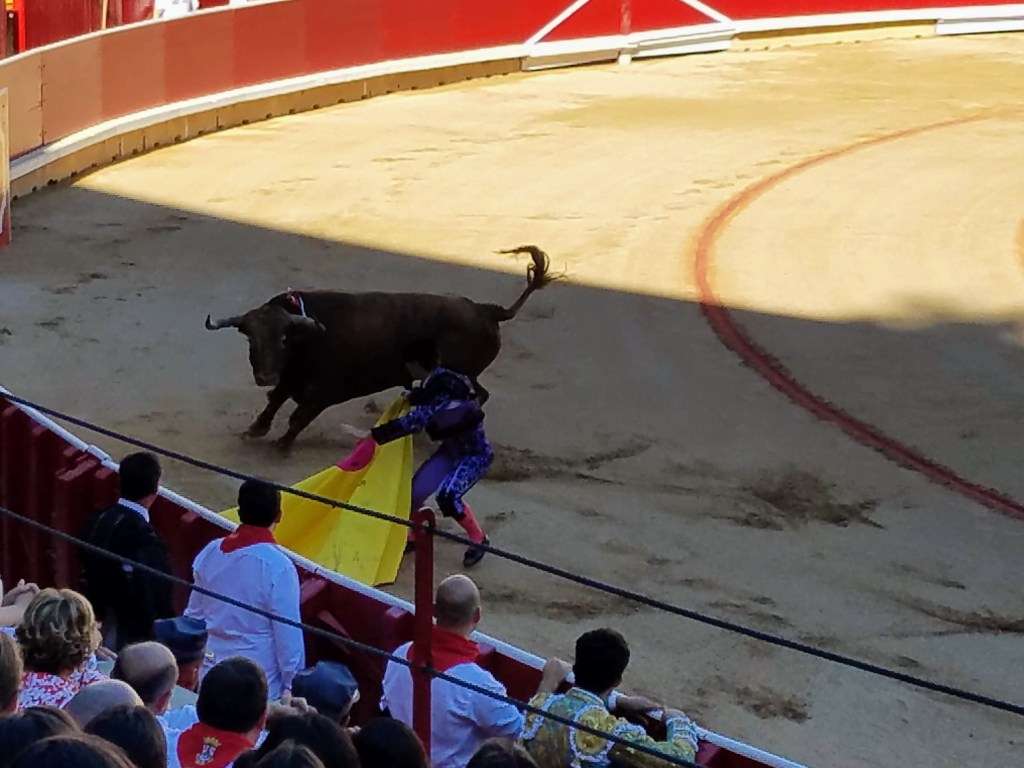
“So, I went to Spain to see bullfights and to try to write about them for myself. I thought they would be simple and barbarous and cruel and that I would not like them, but that I would see certain and definite action which would give me the feeling of life and death that I was working for. I found the definite action, but the bullfight was far from simple and I liked it so much that it was too complicated for my then equipment for writing to deal with, and aside from four very small sketches, I was not able to write anything about it for five years and I wish I would have waited ten.”
-Ernest Hemingway, Death in the Afternoon
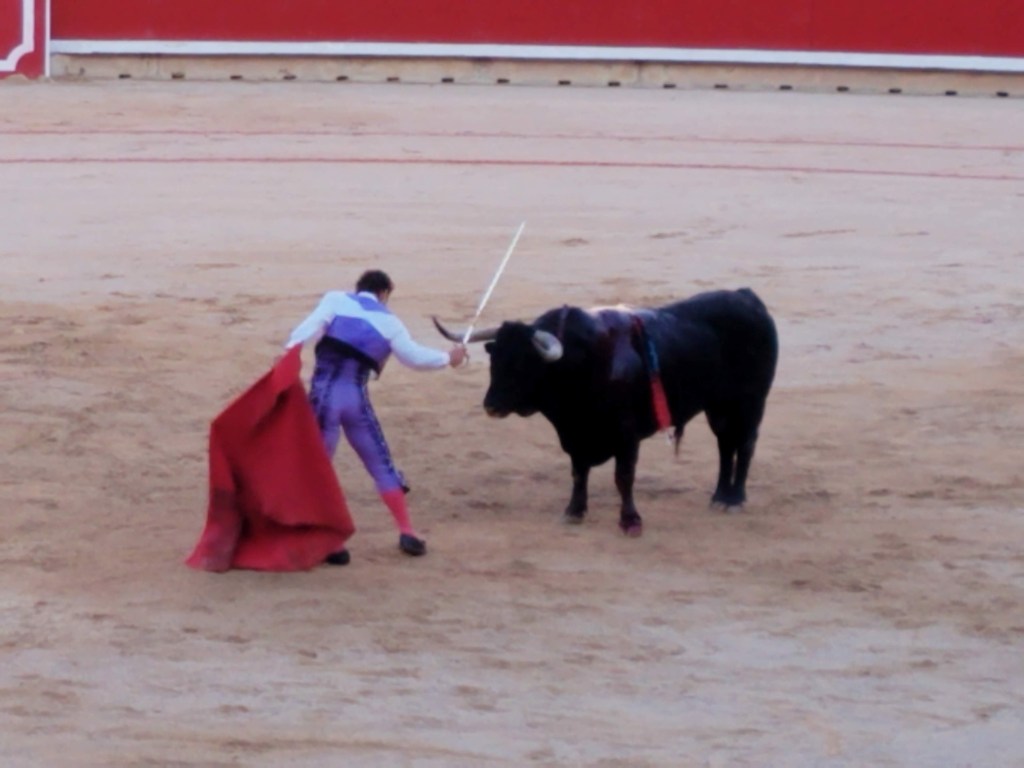
The last act is the sword and the muleta. The muleta is a red cloth folded over a stick. With the muleta the matador masters the bull before going in for the kill. Finally the matador kills the bull by thrusting the sword high between the shoulder blades of the bull.

“The bullfight is not a sport, that is it is not an equal contest or an attempt at an equal contest between a man and a bull. Rather it is a tragedy, the death of the bull, which is played more or less well by the bull and the man involved, and in which there is danger for the man, but certain death for the bull.”
-Ernest Hemingway, Death in the Afternoon

“So far, about morals, I only know what is moral is what makes you feel good after, and what is immoral is what you feel bad after and judged by those moral standards, which I do not defend, the bullfight is very moral to me because I feel very fine while it is going on and have a feeling of life and death and mortality and immortality, and after it is over I feel very sad but very fine.”
-Ernest Hemingway, Death in the Afternoon

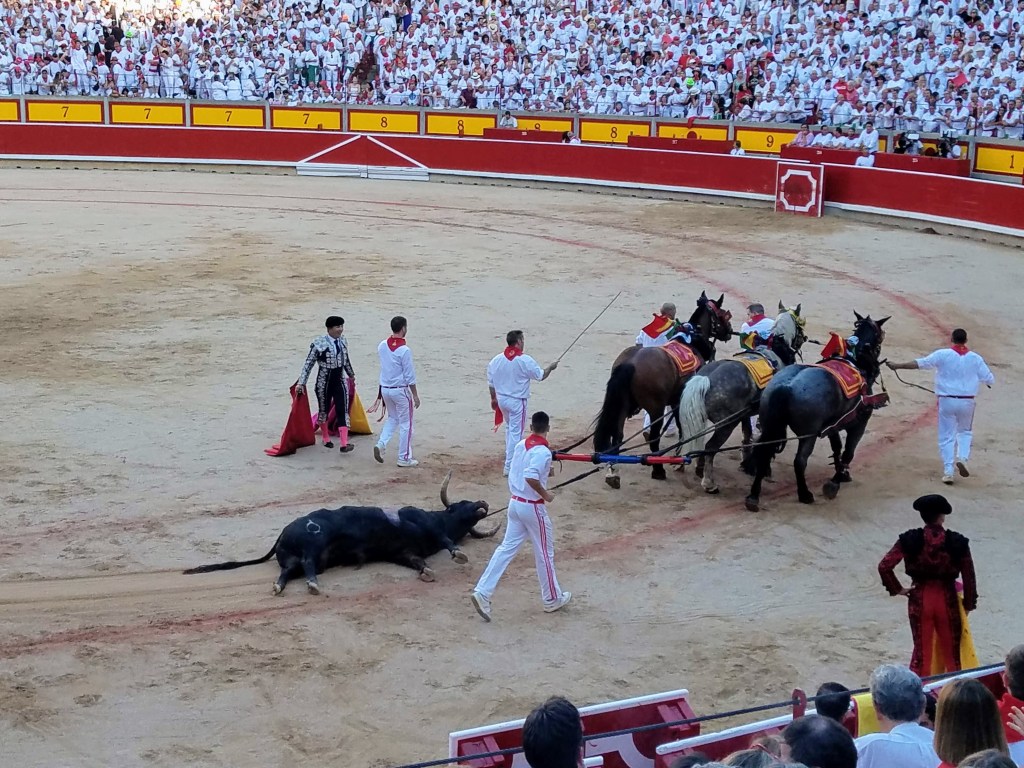

All photos by the author except the photos of himself which were taken by his wife, Maureen

